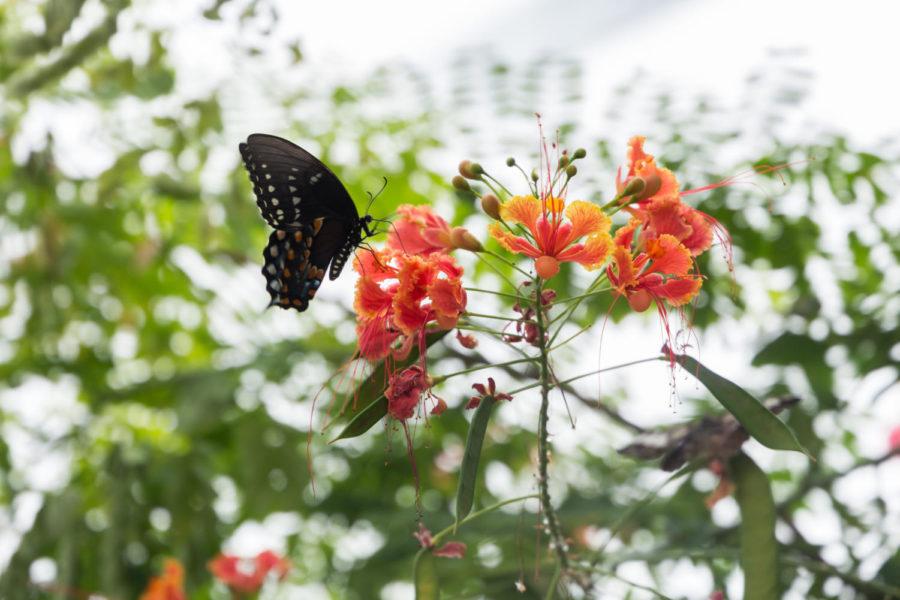Stills: The monarch super generation
Mikinna Kerns/Iowa State Daily
A butterfly in Reiman Garden’s butterfly enclosure perches on a flower during National Public Gardens Day.
September 30, 2018
What do the fall monarch butterfly migration and the family road trip you took as a kid have in common? Well, whether because you are looking for places to land and eat to survive or just glancing away from the path ahead, both trips contain copious hours of staring at the landscape. This can often lead to time feeling as though it’s frozen.
For you, it’s just an exaggerated feeling until your virtual Chihuahua “Tony” will listen to you, but for the monarchs it is more of a reality. This is because the monarch butterfly migration to overwinter in Mexico can span up to 3,000 miles.
This extensive trip is completed by only one generation of monarchs, compared to when they leave from Mexico when the trip is done by multiple generations. The singular generation has been given the name “Super Generation” and these baffling butterflies live for upwards of eight months, eight times longer than regular monarchs. Decreasing day length, temperature beginning to cool and the aging of milkweed plants and other food sources trigger their birth and journey south.
Although some of these monarchs are deemed as “super,” their population is much less than here in the United States. Their kryptonite is habitat loss and fragmentation, and the destruction of milkweed plants by pesticides. Milkweed plants are needed for their survival because it is the only thing that monarch caterpillars will eat. It also is a problem any of us could help solve.
Planting milkweed plants in your home garden is simple and helpful. Starting with seeds in the fall, or a young plant in the spring, these plants can provide monarch butterflies and caterpillars a food source they desperately need to keep their migration system and populations “super.”







